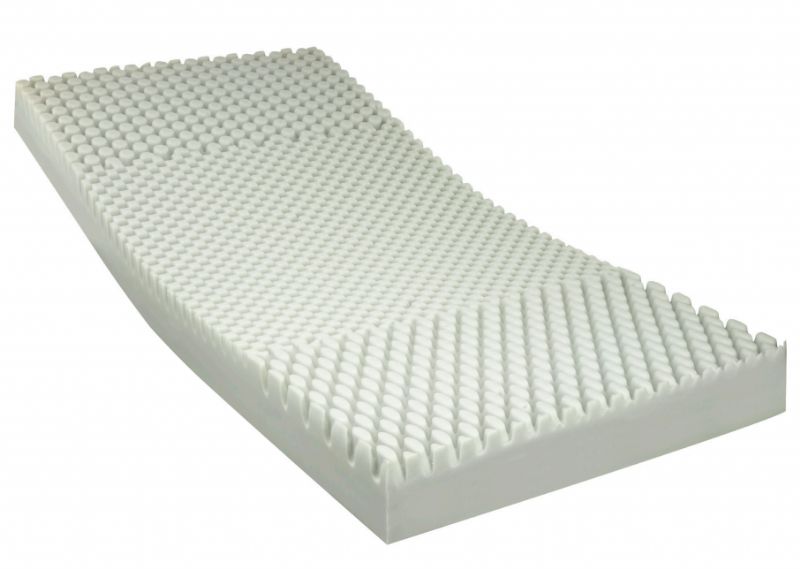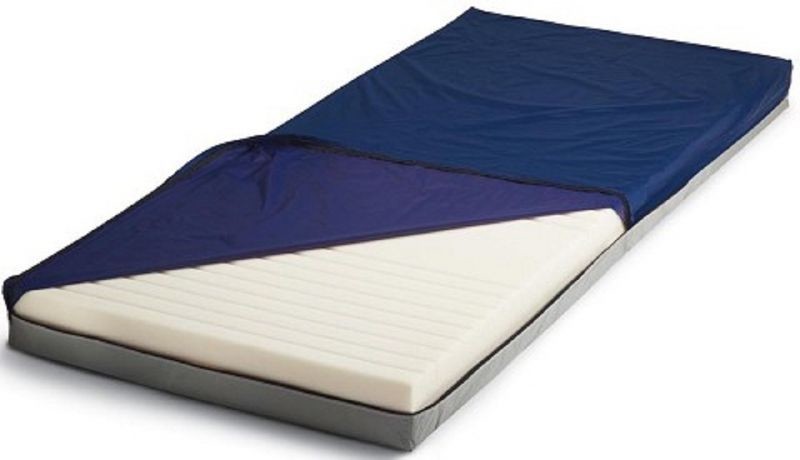1. Choosing the Right Hospital Foam Mattress Size is Vital for Patient Comfort
When it comes to providing quality care for patients in a hospital setting, the right type of mattress is essential. Not only does it affect the comfort of the patient, but it can also impact their recovery process. With a variety of options available, it can be overwhelming to choose the best hospital foam mattress size. In this article, we will explore the top 10 main hospital foam mattress sizes and their benefits for patients.
2. The Standard Hospital Foam Mattress Size: 36 x 80 inches
The most commonly used hospital foam mattress size is 36 x 80 inches. This size is suitable for most standard hospital beds and provides ample space for patients to move around comfortably. It is also ideal for patients who may have limited mobility, as it allows for easy transfers in and out of bed. Plus, this size is readily available and can fit into most hospital budgets.
3. Extra Long Hospital Foam Mattress Size: 36 x 84 inches
For taller patients or those who require more legroom, an extra-long hospital foam mattress size of 36 x 84 inches is a great option. This size provides an additional four inches in length, allowing for more comfortable positioning and reducing the risk of pressure sores. It is also a good choice for patients who may need to sleep in a semi-fowler position to aid in breathing or digestion.
4. Bariatric Hospital Foam Mattress Size: 42 x 80 inches
Patients who require additional weight support and pressure redistribution may benefit from a bariatric hospital foam mattress size of 42 x 80 inches. With an increased weight capacity, this size can accommodate larger patients while still providing the necessary comfort and support. It is also suitable for patients who may be at risk for skin breakdown or have existing pressure sores.
5. Pediatric Hospital Foam Mattress Size: 30 x 66 inches
For pediatric patients, a smaller hospital foam mattress size of 30 x 66 inches is the perfect fit. This size is designed specifically for younger patients and can provide a secure and comfortable sleeping surface. It is also lightweight and portable, making it easy to move from room to room or to take on the go for home care.
6. Low Profile Hospital Foam Mattress Size: 36 x 76 inches
In some cases, a lower profile hospital foam mattress may be necessary for patients who require extra support or have difficulty getting in and out of bed. A low profile hospital foam mattress size of 36 x 76 inches can provide the necessary comfort and support while also reducing the height of the bed for easier access. It is also a good option for patients who may be at risk for falls.
7. Folding Hospital Foam Mattress Size: 36 x 60 inches
For patients who may need to transport their hospital bed or have limited storage space, a folding hospital foam mattress size of 36 x 60 inches is a convenient option. This size can be easily folded and stored when not in use, making it ideal for patients who may be recovering at home or in a temporary care facility.
8. Custom Hospital Foam Mattress Size: Varies
In some cases, a standard hospital foam mattress size may not meet the specific needs of a patient. In these instances, a custom hospital foam mattress size can be made to provide the perfect fit. These mattresses can range in size depending on the needs of the patient and can accommodate unique bed frames or weight capacities.
9. Waterproof Hospital Foam Mattress Size: Varies
For patients who may be incontinent or require frequent cleanings, a waterproof hospital foam mattress size is a must. These mattresses come in a variety of sizes and can provide the necessary protection against spills and accidents. They are also easy to clean and maintain, making them a practical choice for hospital settings.
10. Alternating Pressure Hospital Foam Mattress Size: Varies
For patients who are at risk for developing pressure ulcers, an alternating pressure hospital foam mattress can provide the necessary relief. These mattresses come in a variety of sizes and use alternating air cells to redistribute pressure and promote circulation. They are also adjustable, allowing for different pressure levels and customized comfort for each patient.
In conclusion, choosing the right hospital foam mattress size is crucial for patient comfort and recovery. Whether it's a standard size or a custom option, each mattress has its unique benefits and can cater to the specific needs of the patient. By understanding the different sizes and their uses, healthcare providers can ensure that their patients receive the best care possible.
The Importance of Choosing the Right Hospital Foam Mattress Size

Ensuring Comfort and Support for Patients
 When it comes to providing quality care for patients, every detail matters. From the equipment used to the design of the room, everything plays a crucial role in ensuring the well-being of patients. One important aspect that often gets overlooked is the
size of hospital foam mattresses
. While it may seem like a small detail, choosing the right size can make a big difference in the comfort and support provided to patients.
When it comes to providing quality care for patients, every detail matters. From the equipment used to the design of the room, everything plays a crucial role in ensuring the well-being of patients. One important aspect that often gets overlooked is the
size of hospital foam mattresses
. While it may seem like a small detail, choosing the right size can make a big difference in the comfort and support provided to patients.
The Standard Hospital Foam Mattress Size
 The standard hospital foam mattress size is 36 inches wide and 80 inches long. This is the most commonly used size in hospitals and healthcare facilities. However, this size may not be suitable for all patients. Some may find it too narrow for their liking, while others may find it too short. This can lead to discomfort and even affect their recovery process.
The standard hospital foam mattress size is 36 inches wide and 80 inches long. This is the most commonly used size in hospitals and healthcare facilities. However, this size may not be suitable for all patients. Some may find it too narrow for their liking, while others may find it too short. This can lead to discomfort and even affect their recovery process.
The Benefits of Customized Hospital Foam Mattresses
 To address this issue, many hospitals now offer customized hospital foam mattresses in different sizes. This allows for a more comfortable and personalized experience for patients. For instance, patients who are taller or larger in size may benefit from a wider or longer mattress. This can provide better support for their body and alleviate any discomfort they may feel.
To address this issue, many hospitals now offer customized hospital foam mattresses in different sizes. This allows for a more comfortable and personalized experience for patients. For instance, patients who are taller or larger in size may benefit from a wider or longer mattress. This can provide better support for their body and alleviate any discomfort they may feel.
Considerations for Choosing the Right Size
 When choosing the right hospital foam mattress size, there are a few factors to consider. First and foremost, the patient's comfort should be the top priority. It is important to assess their needs and preferences and choose a size that will best cater to them. Additionally, the size of the hospital bed and the space available in the room should also be taken into account.
When choosing the right hospital foam mattress size, there are a few factors to consider. First and foremost, the patient's comfort should be the top priority. It is important to assess their needs and preferences and choose a size that will best cater to them. Additionally, the size of the hospital bed and the space available in the room should also be taken into account.
The Impact on Patient Recovery
 The size of a hospital foam mattress may seem insignificant, but it can have a significant impact on a patient's recovery process. A comfortable and supportive mattress can help alleviate pressure points, improve circulation, and promote better sleep. This, in turn, can aid in the healing process and contribute to a faster recovery.
The size of a hospital foam mattress may seem insignificant, but it can have a significant impact on a patient's recovery process. A comfortable and supportive mattress can help alleviate pressure points, improve circulation, and promote better sleep. This, in turn, can aid in the healing process and contribute to a faster recovery.
In Conclusion
 Choosing the right hospital foam mattress size is crucial for providing optimal care for patients. It not only ensures their comfort but also plays a role in their recovery process. By considering the individual needs of patients and offering customized options, hospitals can create a more comfortable and supportive environment for their patients.
Choosing the right hospital foam mattress size is crucial for providing optimal care for patients. It not only ensures their comfort but also plays a role in their recovery process. By considering the individual needs of patients and offering customized options, hospitals can create a more comfortable and supportive environment for their patients.


















































